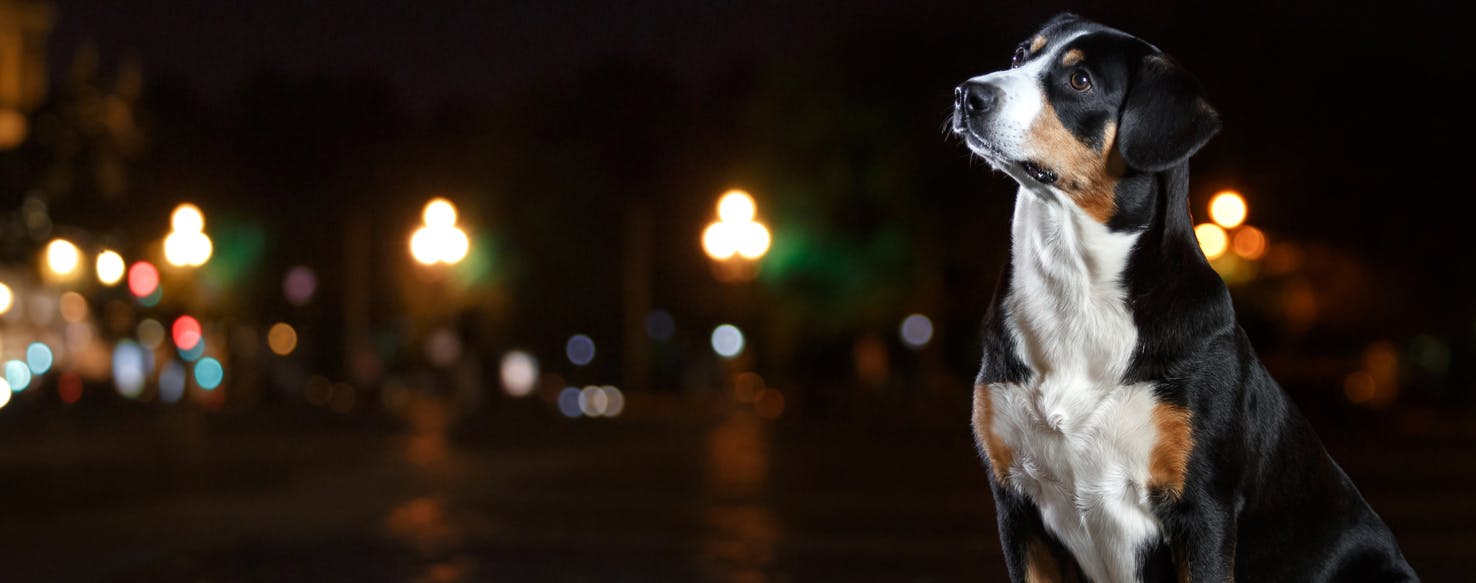- Home
- Dog Wellness
- Why Your Dog Sees Better At Night Than You
3 min read
Why Your Dog Sees Better At Night Than You

By Amy Caldwell
Published: 09/13/2017, edited: 08/10/2021
Save on pet insurance for your pet
You don't have to choose between your pet and your wallet when it comes to expensive vet visits. Prepare ahead of time for unexpected vet bills by finding the pawfect pet insurance.
Your dog's ancestors were nocturnal hunters, most active at sunset and sunrise, when low light was available to them for their activities and to locate prey. As such, they required excellent night vision in order to seek out prey and protect themselves from fellow predators. So, it makes sense that your dog has better vision at night and in low light than you have. But how does this work, and just how much better can your dog see when it is dark? Can they see as good as humans in bright light? Read on for more answers on how your dog's night vision works.
Who Has the Advantage, and When?
It turns out, canines see better in dim light, and humans have some advantages in bright light, such as better color discrimination, but neither dogs nor dog owners see in total darkness. Your dog's night vision allows them to make better use of what little light is available, to see better than us, but if no light is available your pup is as visually helpless as you are.
What Makes the Difference?
So why is there a difference in our visual abilities? There are several differences in the makeup of your dog's eyes.
Dogs have larger pupils than humans. The pupil is the structure that allows light into the eye, so having a larger pupil allows more light to enter your dog’s eye. Also, dogs have more rods and fewer cones than humans. Rod and cones are photoreceptors on the retina of the eye that collect light information and allow images to form. While cones are useful for distinguishing color, rods are light-sensitive and allow for vision where dim or little light is available. The presence of more rod cells allows your dog to produce better images in dim light. So your pup has better visual acuity at night, or when limited light is available, than you do. You, on the other hand, have more cones than your dog, and can better discriminate color than your furry buddy, as color discrimination is facilitated by cone photoreceptors.
Another characteristic of your dog’s eye that helps with night vision, is that the lens of their eye is closer to the retina, where the light-sensitive rods are located, which makes the image projected onto the retina brighter. Your dog's lens is also larger, allowing them to gather and focus more light.
Visual Accuracy
While these structures and adaptation make your dog's night vision better than yours, humans at least have these same structures. But your dog has a secret weapon in the night vision game that humans do not possess! Dogs have a tapetum lucidum, located behind the retina. Light that is not caught by the rods (photoreceptors in the retina) hits the tapetum and bounces back to the retinal cells a second time, allowing them another “chance” to capture the light information. Basically, the tapetum acts like a mirror to reflect light back to the retina. This structure is what makes your dog's eyes glow in the dark when light hits them, giving them a spooky look, but also providing their retina with a reflection of light entering the eye, and another chance to form an image on the retina, when poor light is available. The tapetum also changes the wavelength of the light so that it is more easily picked up by the photoreceptors in the retina, through a process called fluorescence. A double advantage to your dog's ability to see at night, a reflection of light entering the eye and more “usable” light for the retina. This makes your pooch's night vision about 5 times better than yours! The disadvantage of this structure is that it also scatters light, making your dog's visual acuity not as accurate as yours in bright light, which means they cannot see fine detail as well as we do.
Dogs also have a better field of vision than us. While we can see about 190 degrees, your four-legged companion can see 250 degrees, allowing them to catch movement and images on their periphery without turning their heads. An advantage when scanning for small movements that might indicate prey.
Advantage: Dogs
So how good is your dog's night vision? Pretty good, compared to ours, although your cat will probably give your pooch a run for their money in the night vision department! Dogs can see better in low light due to having larger pupils and lenses for capturing light, more photoreceptors that work in dim light, and a specialized structure that reflects light back to the retina and changes light wavelengths. Dogs do not see or distinguish color and fine detail as well as their owners. However, when light is available but in very dim light, they definitely have the advantage.
You may also like
